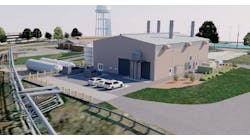A group of universities, including the University of Tennessee (UT), is studying the social-psychological side of distribution microgrids, behavioral patterns, and energy systems.
A UT sociology professor’s expertise in social psychology and human behavior will be critical to addressing the nation’s infrastructure challenges.
Chien-fei Chen and her collaborators are part of a $20 million National Science Foundation initiative focused on enhancing and making the nation’s infrastructure—clean water, electricity, transportation, and health care—more resilient. Their project is one of twelve recently selected for the three-year grant.
Chen is partnering with researchers at the University of New Mexico, Michigan Technological University, and Texas Tech University who are mechanical, civil, and electrical engineers. The only social scientist on the team, Chen is research professor and education diversity director at UT’s CURENT (Center for Ultra-Wide-Area Resilient Electric Energy Transmission Networks) and an adjunct professor in the Department of Sociology.
“Traditionally, we often think humans are passive and never consider their impact when we try to solve technology issues,” she said. “People’s patterns, motivation, and attitudes related to energy usage are going to affect total energy consumption, which is going to affect our power grid.”
Chen and her collaborators will focus their project on microgrids—energy grids in regions and localities that can operate apart from the traditional large-scale power grid. The traditional power grid provides power to millions, where the microgrid would generate and use energy provided locally, such as energy produced for consumers’ small rooftop photovoltaic systems, electric cars, thermostats, and ventilation systems.
Their goal is to help transform local power grids into distribution microgrids, which would combine the advantages of the traditional power grid, such as the ability to transfer renewable energy across wide geographical areas, with the advantages of emerging technologies, such as the ability to produce and use power locally in the event of major grid outages. They have received $2 million from NSF for this work.
The team aims to understand the connection between social-psychological factors, behavioral patterns, and the various systems that manage the flow of energy. As a result, the researchers hope to develop approaches that will eventually make microgrids more stable and reliable, reduce costs to consumers and governments, make the grids more cost-effective, increase the use of renewable energy, and reduce carbon emissions and carbon footprint.
The researchers, using Chen’s expertise, will analyze social-psychological factors affecting household electricity consumption, examine people’s decision-making processes, and seek to understand which energy saving strategies consumers will accept and implement.
Starting in the spring, the team will administer surveys, interviews, and field experiments to residents in Knoxville, Boston, and New Mexico about energy usage as part of the project.
The author of this article, Lola Alapo is a science writer for the University of Tennessee, Knoxville. The article originally appeared on UT’s website.






